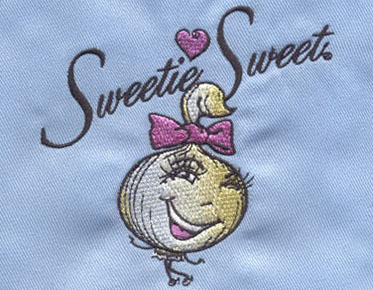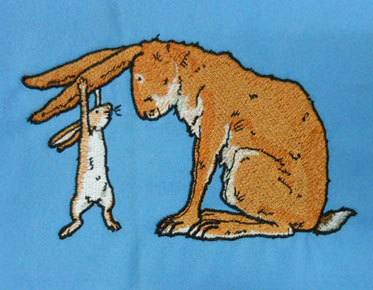How to Realize Gradient Embroidery Digitizing?
Gradient colors can cause emotional changes, and the superimposition of gradient colors can add emotional effects to the image, thus increasing the sense of design. Gradient embroidery digitizing can enhance the memory of the brand, and the reasonable use of gradient colors can enhance the visual impression of the user.
The use of gradients in different colors
will make the user more aware of the brand. Therefore, in the last few years,
designers have been increasingly interested in the digital application of
gradient embroidery. Today, we're going to see how the gradient computer
embroidery is done. So we split it up into two processes to understand.
1. In what stitch sequence is the pattern of embroidery digitizing pattern-making?
Knowing what stitch sequence is the pattern of embroidery digitizing pattern making depends on the order in which the objects of embroidery digitizing pattern making are prepared.
Usually, before embroidery digitizing, we need to analyze and plan the pattern shape of computer embroidery and the order of embroidery in advance. The shapes of the embroidery need to be clearly defined so that they can be easily embroidered out. The best shapes have relatively constant widths, smooth edges, no sharp stitches, and no small, prominent details. Detailing should always be the last stitch to be embroidered. If you digitize by hand, the object is stitched out like the design. In other words, the number sequence defines the embroidery sequence.
When designing computer embroidery, we need to use a powerful automatic sequence design to create an embroidery sequence that is visually optimized for the stitches. Automatic sequential design means computer embroidered version design that can be produced economically with minimal downtime and accurate fabric texture and color.
A good computerized embroidery pattern maker will design electronic patterns for automatic transformation and stitch sequence, making planning less time-consuming and more time devoted to artistic selection. With mixed-mode designs, you can use digital embroidery tools to make a variety of designs by automatically converting, adding, and editing, or you can all use manual methods to adjust the embroidery sequence to improve the embroidery effect.
2. How to realize the gradient effect of Embroidery Digitizing?
After understanding the above knowledge points, we know that computer embroidery is performed in the order of the stitches in the design pattern making, so How to realize the gradient effect of Embroidery Digitizing? Today, Eagle Digitizing will chat with you about this topic casually.
In fact, using multi-color thread embroidery in the process of embroidery plate making is a solution, but the changes cannot be controlled. With gradient, there is no way to achieve a thread of one color. Generally, one color is used to make the base, and then the thread of another color is used to embroider on the top. The mixture of the two colors produces a gradient effect.
The adjustment of the embroidery pattern
stitch angle depends on the type of object you are working with. For compound
filler objects, you can set the stitch angle for the entire object.
Additionally, with the Stitch Angle tool, you can add multiple stitch angles.
You can also set and add stitch angles for Input Method A and Input Method B
objects. With the Reshape Object tool you can adjust the stitch angle of Input
Method A and Compound Fill objects. Note: You cannot change the stitch angle of
the Star, Ring and Input Method C objects because the stitches follow the shape
automatically. However, by moving the stitch entry point you can change the
stitch angle of the circular object.



